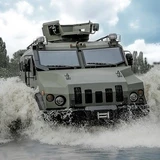From Nanotechnology to Astronomy

It is impossible to observe outer space through a telescope with a deformed mirror. How can you ensure ultra-precision positioning and compensate for any deformation?
This is the mission entrusted to Micromega Dynamics for a future telescope in Turkey.
Wind turbines, machine tools, marine industries, aeronautics, automobile or railways … Micromega Dynamics feels at ease in applications where there is vibration. Specializing in passive and active vibration control systems, the Belgian company also develops solutions for structural surveillance and high precision mechanisms for scientific applications. These mechatronic devices are used in particular for measuring and actively controlling the vibrations and the form of large ground-based telescopes. They will equip the primary mirror of the future DAG telescope, which will be inaugurated in 2020 in the Turkish mountains.
The stakes are high. The mirror measures 4 m in di- ameter, it is made of glass and the slightest deformation would obviously completely distort the data collected by astronomers. Consequently, its shape must remain constant within a few nanometres, after every movement and in all environmental conditions, such as gravity, wind, temperature variations – there will be a combination of all these where the telescope will be installed at an altitude of over 3,000 m.
“There are two solutions to avoid deformation, explains Nicolas Loix, project manager at Micromega. The first one is to use a very thick mirror: it will be rigid and will not deform. However, this is very expensive and once it is cast, it needs to cool down for up to two years before it can be used! The second solution is to take a thinner mirror, which will deform, but we will compensate it. This was the solution selected for the DAG telescope.”
A rigid primary mirror would have been 50 cm thick and 40 tons. The selected mirror is 14 cm thick and weighs 4.5 tons, which is much less, but still enormous. Preventing its deformation under its own weight is a real challenge. “It is the equivalent of making a man sit down on a sheet of paper, explains Nicolas Loix, while keeping the same flexibility of the paper!”
In order to manage, Micromega installed 66 actuators on the rear side of the mirror, each of them generating a force of 100 kg with a precision of 30 gr. They dissipate less than 1.6 W (heat produced by electricity must also be minimized, since it causes deformation). Each actuator is comprised of a pneumatic power generator controlled by high-speed piezoelectric valves, an ultra-precision force transducer (0.03%) and control electronics capable of manoeuvring the whole combination and of communicating with the telescope’s control programme. Since each actuator is factory calibrated, it can be entirely replaced, which implies full integration of the control electronics in the actuator.
Micromega had already equipped telescopes in the past, but this project involved unprecedented constraints. “For previous applications, we could use separate connectors for power sup- ply, compressed air and communication, explains the project manager. In this case, electronics have to cope with 100% condensing humidity. To ensure full water-tightness, we had to reduce the number of entry points. This was possible thanks to LEMO’s fluidic connectors, which combine pneumatic and electric contacts, with simple assembly processes.”
EUROPEAN COOPERATION
The DAG telescope will capture its first beam of light in 2020. It will be the heart of the Erzurum observatory and, thanks to it, Turkey will at last be able to participate in complex outer space projects, such as observing exoplanets.
Turkish astronomers have been dreaming about such a telescope since 2000. “They only had a small Russian telescope in Antalia, with operating instructions in Russian! explains Swiss astrophysicist Laurent Jolissaint. This project will change it all !” Laurent Jolissaint is the project manager for scientific instrumentation, a mission entrusted to the High School of Engineerting and Management of the Canton of Vaud (Switzerland). The school is also in charge of the design management of adaptative optics and of the telescope.
The DAG project involves 6 main partners. The Belgian company AMOS (Advanced Mechanical and Optical Systems), the main contractor, is in charge of active optics, for which they have appointed Micromega Dynamics. The Italian engineering group EIE is in charge of mechanics. The German company Shott supplies the raw mirrors, which will be polished by LZOS (Lytkarino Optical Glass Factory) in Russia. The project owner is the Turkish science institute ATASAM (Atatürk University) in Erzurum, in partnership with ISIK University in Istambul.

Micromega actuators on the rear side of the telescope mirror (66 of these will be installed on the DAG telescope).

Actuator models to be installed on the rear side of the DAG telescope.


